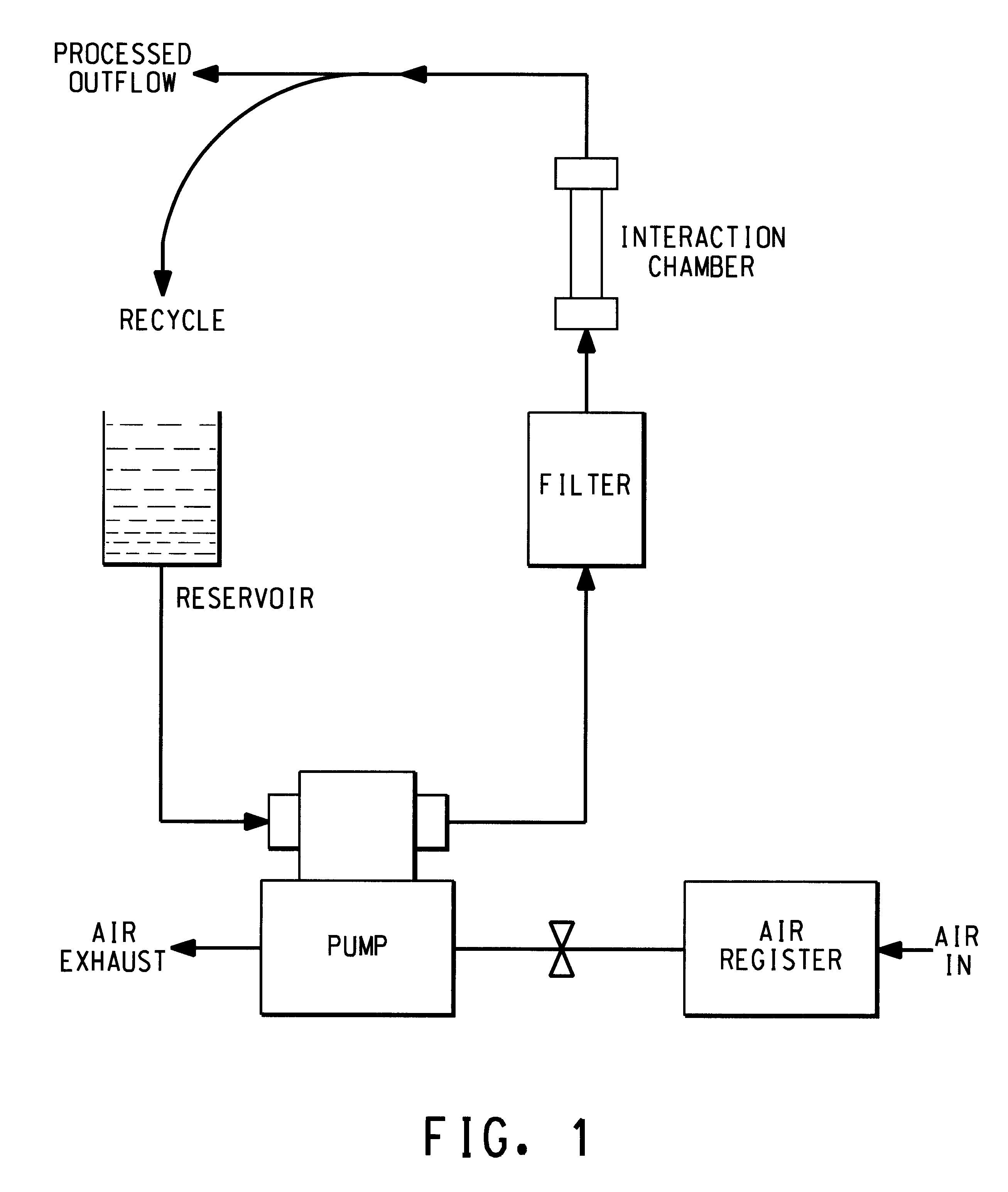Free radical polymerization method for fluorinated copolymers
a free radical polymerization and copolymer technology, applied in the direction of ion-exchangers, cation exchanger materials, chemistry apparatus and processes, etc., can solve the problems of lack of electrochemical characteristics, lack of mechanical properties of polymers with adequate mechanical toughness and strength, and insufficiently satisfactory results
- Summary
- Abstract
- Description
- Claims
- Application Information
AI Technical Summary
Problems solved by technology
Method used
Image
Examples
example 1
The MicroFluidizer.TM. reservoir was charged with a solution of 10 g C-8 in 100 ml demineralized water. The pump was started and the fluids allowed to recycle to mix the surfactant solution with the 50 ml of pure demineralized water held up within the apparatus. PSEPVE (75 g) was added to the reservoir and the system allowed to recycle for 10 min to produce a well dispersed PSEPVE emulsion. The emulsion was translucent blue as it exited the MicroFluidizer.TM.. Particle size analysis, at 25.degree. C. using a 200 mw Argon-ion laser at 488 nm with 90 degree scattering angle, showed the average diameter of the freshly prepared PSEPVE emulsion droplets to be 238 nm. The emulsion aged to an opaque white over 6-8 hr. The white emulsion was generally stable for at least 5 days before settling was observed. After aging for 2 days, particle size analysis, at 25.degree. C. using a 200 mw Argon-ion laser at 488 nm with 90 degree scattering angle, showed the average diameter of the aged PSEPVE ...
example 2
The MicroFluidizer.TM. reservoir was charged with a solution of 22 g C-8 in 260 ml demineralized water. The pump was started and the fluids allowed to recycle to mix the surfactant solution with the 50 ml of pure demineralized water held up within the apparatus. PSEPVE (250 g) was added to the reservoir and the system allowed to recycle for 20 min to produce a well dispersed PSEPVE emulsion. The outflow was then directed to a 500 ml volumetric flask. After the reservoir was pumped down, 100 ml demineralized water was added and pumped through the system to flush the remaining PSEPVE emulsion through and bring the level in the volumetric flask up to the mark. The emulsion was translucent blue as it exited the MicroFluidizer.TM.. The emulsion aged to an opaque white over 6-8 hr.
example 3
A 4-L horizontal autoclave with mechanical agitator was purged with nitrogen and charged with pre-emulsified PSEPVE (150 g) in aqueous ammonium perfluorooctanoate (prepared using 35 g ammonium perfluorooctanoate and 600 mL water in the Microfluidizer.TM. according to the methods hereinabove described, then diluted to 1.0 liter with distilled water, and 1500 mL of distilled water. The reactor was evacuated, then pressured to 0 psig with vinylidene fluoride (3 times), heated to 60.degree. C., pressured to 400 psig with vinylidene fluoride, and agitated at 200 rpm. A solution of aqueous potassium persulfate (0.6%, 50 mL) was added over a 5 min period. Reactor pressure was maintained at 400 psi until 220 g had been fed after initiator addition. Agitation was stopped and the reactor was cooled and vented. The resulting milky dispersion was frozen and thawed to coagulate the product which was filtered through nylon cloth and washed with water repeatedly to remove surfactant. After air dry...
PUM
| Property | Measurement | Unit |
|---|---|---|
| size | aaaaa | aaaaa |
| diameter | aaaaa | aaaaa |
| size | aaaaa | aaaaa |
Abstract
Description
Claims
Application Information
 Login to View More
Login to View More - R&D
- Intellectual Property
- Life Sciences
- Materials
- Tech Scout
- Unparalleled Data Quality
- Higher Quality Content
- 60% Fewer Hallucinations
Browse by: Latest US Patents, China's latest patents, Technical Efficacy Thesaurus, Application Domain, Technology Topic, Popular Technical Reports.
© 2025 PatSnap. All rights reserved.Legal|Privacy policy|Modern Slavery Act Transparency Statement|Sitemap|About US| Contact US: help@patsnap.com

